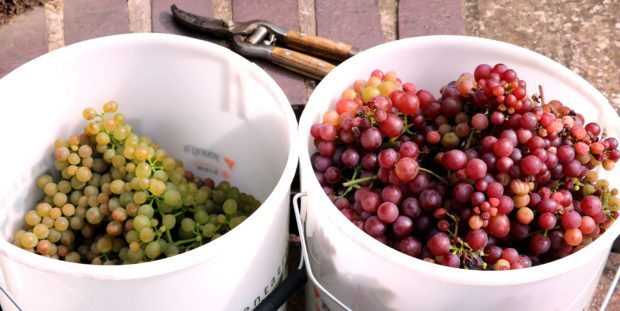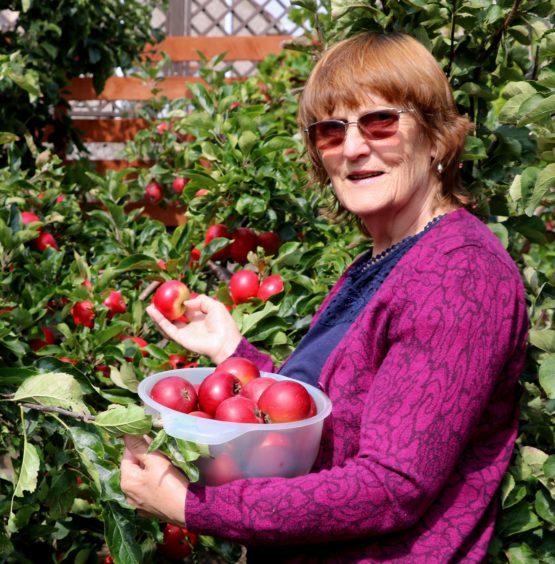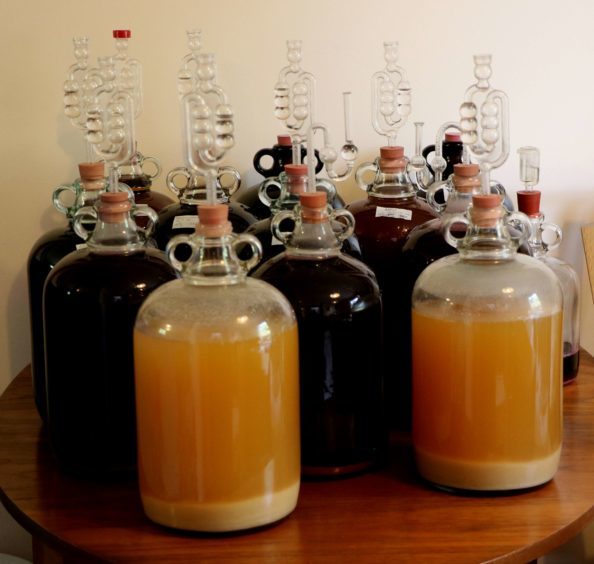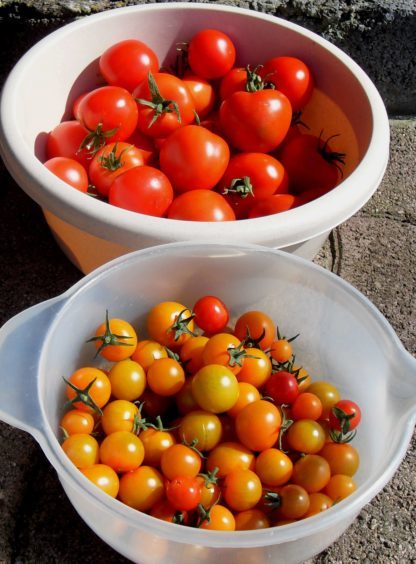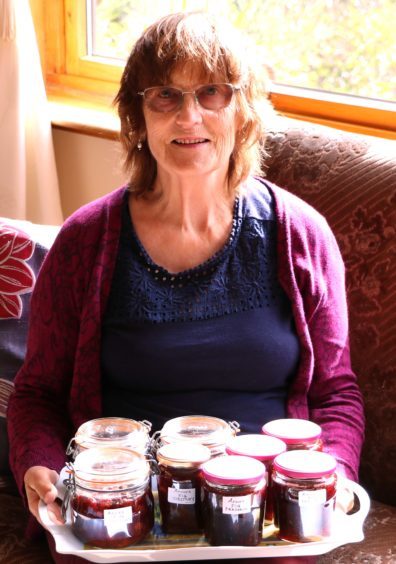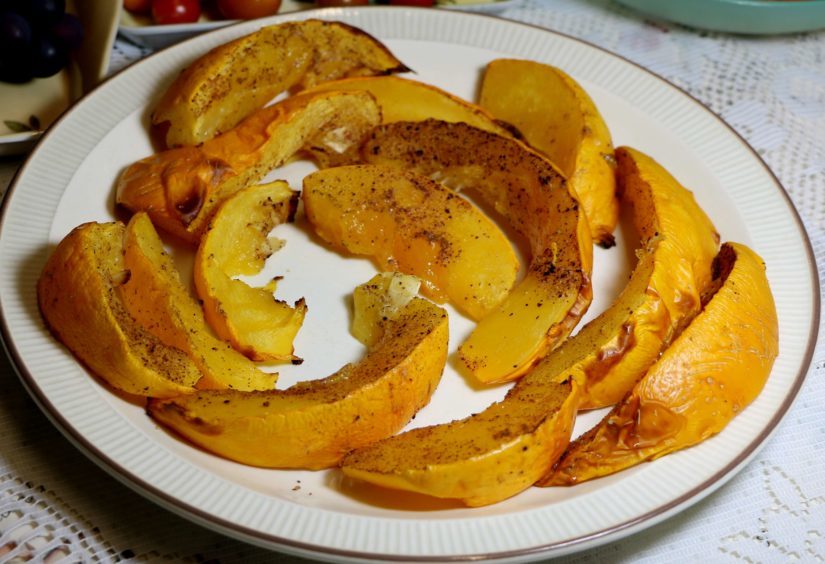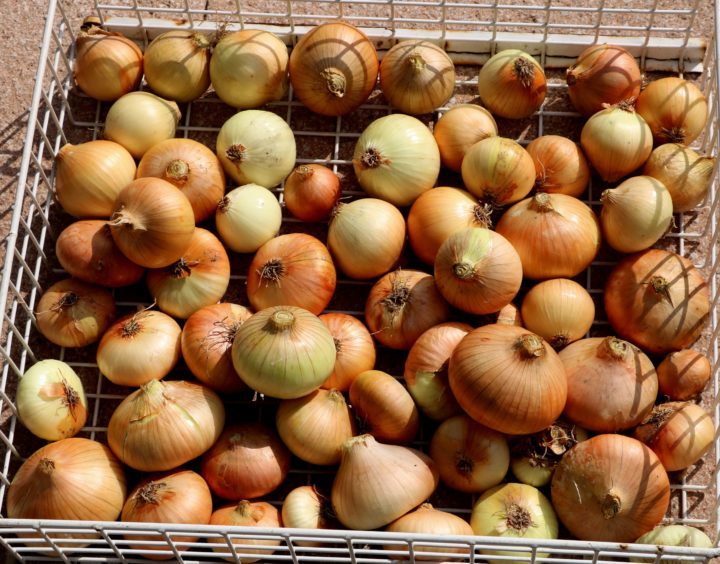After a season of rich pickings, it’s time for John Stoa to preserve his autumn crops.
Autumn is the traditional time to harvest many crops such as potatoes, apples, pears, plums, sweet corn, pumpkins and grapes.
Soft fruit is used for immediate use (strawberries, raspberries, brambles and tomatoes) with surplus for the freezer or jams and chutneys.
In the past, although I was getting bumper crops of figs, picking was done over several months so they were all consumed as fresh fruit.
This year however the tropical summer has brought on the ripening so fast that surplus figs had to find a home as two people could not consume forty figs over three days.
Anna found some great recipes for both fig chutney as well as fig jam.
The fig chutney has apples, onions, sultanas added with brown sugar, cider vinegar and some salt, ginger, a clove and some ground nutmeg.
The jam is pure figs and sugar in equal weights with a vanilla pod and some lemon juice.
Potatoes harvested in autumn and onions in late summer are all dried off and stored in a dark cool but frost free shed or garage.
Beetroot can be lifted and stored dry in boxes of sand or dry soil, but with mild winters mine have been happy outdoors where they are growing, and if frost threatens they get happed up with soil for protection.
Some beetroots however are continually called for in the kitchen for a delicious beetroot soup, or in a borsch dish, as well as the traditional pickled beetroot.
Leeks, Swedes, parsnips, cabbage and sprouts are all happy left in the ground and used as required. They will all happily survive till the end of winter.
Pumpkins in a normal year are harvested at the end of October, but this year mine are ready in mid September.
The leaves suffered mildew then some damage as I harvested the sweet corn which shared the growing space as an experiment as they are happy together growing at different heights.
The pumpkins will now be brought home to brighten up a shelf in the house.
They usually last well into the next year, but are very popular when sliced and roasted as well as an ingredient in soups.
Summer crops of gooseberries, black and red currants are either in the freezer or converted into jams.
Surplus raspberries and strawberries are also in the freezer to be used for jams, compote and summer puddings.
In summer the gooseberry crop was huge, so a fair bit got frozen but some got combined with mint to make a savoury but sweet gooseberry jelly, and still enough for five demijohns of vintage gooseberry wine.
Sweet corn gets harvested in one task once ripeness is at its best. Sampling is started ahead to see how the crop is progressing.
Some are kept in the fridge for immediate use over a couple of weeks, but then the others are frozen.
Preparing them for the freezer starts on a sunny day outdoors where we strip off all the leaves and remove the tip if it lacks corn.
They are then blanched in boiling water for a couple of minutes, removed and plunged into cold water before laying out to dry and then bagged up for freezing.
The freezer space gets filled early with the gluts of soft fruit and vegetables like the broad beans, dwarf French beans and peas, but room is needed for the surplus raspberries and strawberries as well as the sweet corn.
This is where my wine brewing helps out as I can utilise the previous year’s surplus of saskatoons, chokeberries, blackcurrants and gooseberries.
Once they are defrosted they are perfect for a homebrew and release space in the freezer for the next crop. At this time of year there is no shortage of produce.
Pears do not store for very long, so surplus can be peeled, cored and diced then slightly cooked with a dash of water and some vanilla.
Once cold they can be frozen for future use in sweets, with yogurt, custard or with breakfast cereals.
Tomatoes have had a brilliant year, but now there are huge surpluses for freezing to be used later on for soups and pasta sauce.
Wee jobs to do this week
As autumn weather brings down our temperatures our greenhouse tomatoes and grapes come to the end of their season.
No need for any more feeding but keep watering if required.
Tomatoes can hang on the vine for many more weeks, but pick them as they ripen.
If you have a few grape varieties, the early ones like Siegerrebe, the seedless Flame and Solaris will have been picked but Black Hamburg ripens slowly over many weeks so just pick those that ripen and be patient for the later bunches as Black Hamburg can continue to ripen up to the end of November.
